On Campus: UWGB’s Grow-Your-Own Flax Project
July 7, 2014
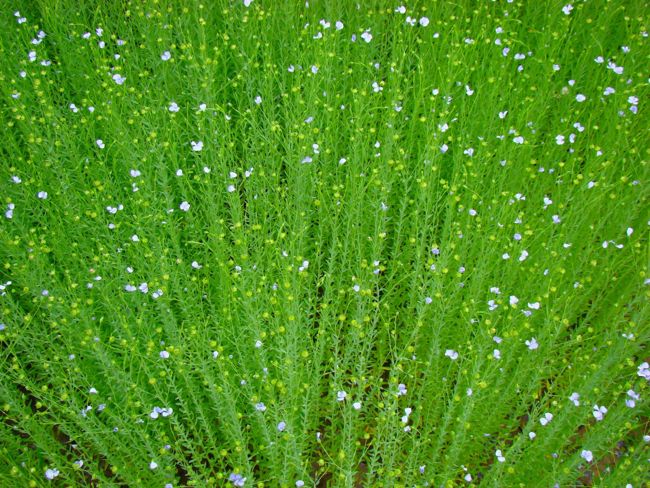 I have never been a “sheep to shawl” kind of fiber artist.
I have never been a “sheep to shawl” kind of fiber artist.
In fact, until about 2010, my own studio practice was deeply entrenched in the philosophical mire of post-modernist fine art, albeit with some pretty stiff leanings towards cloth and thread.
But I teach at the University of Wisconsin / Green Bay and we are a campus that takes our interdisciplinary mission quite seriously. This opens up a lot of possibility (and once in a while, pressure) for me as an artist to collaborate with others from outside the discipline.
Enter the Flax Project.
Originally conceived as a partnership between myself and my intrepid colleague, Dr. Heidi Sherman, (a medieval historian) on behalf of a student interested in recreating historic textiles, this project allowed for learning on multiple levels, across disciplines.
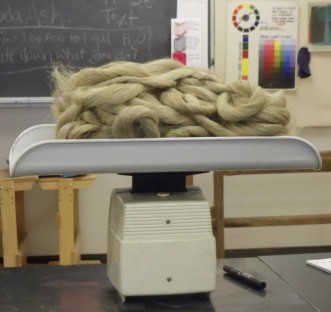 Dr. Sherman’s scholarship is centered on archaeological finds specifically related to flax production in a particular time and place. My classroom practice involves teaching and learning all aspects of fibers and textiles, leading to producing works of art. By growing our own flax, we would be creating an experimental archaeology lab for the history students, and for the art-textiles students, we’d be growing art supplies.
Dr. Sherman’s scholarship is centered on archaeological finds specifically related to flax production in a particular time and place. My classroom practice involves teaching and learning all aspects of fibers and textiles, leading to producing works of art. By growing our own flax, we would be creating an experimental archaeology lab for the history students, and for the art-textiles students, we’d be growing art supplies.
This made sense in the context of our interdisciplinary campus. Additionally – because of the unique quality of textiles and textile production as the axis of human experience in materiality – we also created possibilities beyond our initial goal of helping one student combine her interests.
To begin, we found excellent teachers in Hans and Sara von Trusckow of The Woolgatherers in Fond Du Lac, Wisconsin. In a one-day workshop they taught us how to process the flax we planned to grow. Sara opened up a very important possibility with flax fiber when she told me that the tow, which is essentially a by-product of the hackling process, made good paper.
Our location in Northeast Wisconsin was well-suited to the project because our campus is right above the Bay of Green Bay and, therefore, cool in the morning and warm the rest of the day with adequate humidity – great flax-growing conditions.
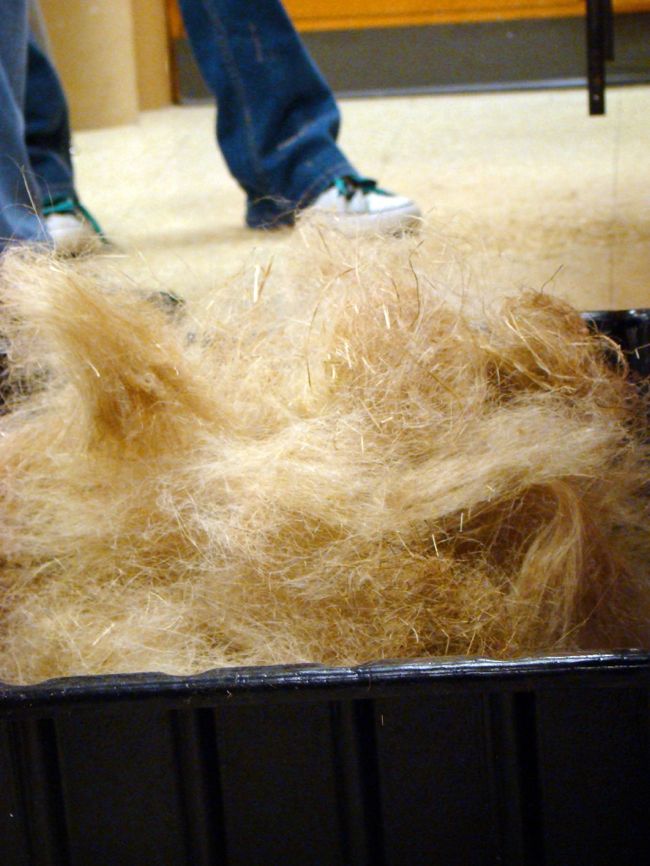 We also live in proximity to a lot of paper-making industry, so the making of paper from home-grown flax was well-supported.
We also live in proximity to a lot of paper-making industry, so the making of paper from home-grown flax was well-supported.
While our student did spin flax and weave it into cloth, we continued to explore in the art studios what else could be done with the linen produced by the flax.
At the same time, Dr. Sherman’s students expanded on research in Viking traditions with linen and flax cloth. Eventually, we went to Denmark, to Lejre, to learn how to build our own tools; the side effect of that was learning to dye with medieval plant dyes. Now we grow those too!
In late May (2014), Dr. Sherman and I sat down to discuss Flax IV. Now in our 4th planting season, our project has yielded much more than just our lovely flax.
It has allowed us to save money on materials, justified funding of our own Hollander beater (amongst other tools), expanded our knowledge of textile production from times gone by and, perhaps most importantly, has grown a community of flax followers who join us on Facebook at UWGB FlaxProject. This Facebook-enabled group comes to us with new ideas for our project while also doing their own research on other campuses – inspired by our experience.
Growing and processing flax, and dye plants as well, are 2 ways to fit the textiles curriculum into the greater landscape of a true Liberal Arts education, and nicely, it supports contemporary practice in art too – mimicking in textile materials the same principles of the “locatarian” and slow-food movements.
I did not realize how much fun slow-textiles would be and how rewarding. Now we dream of having campus sheep – or maybe goats on the roof…
________________________________
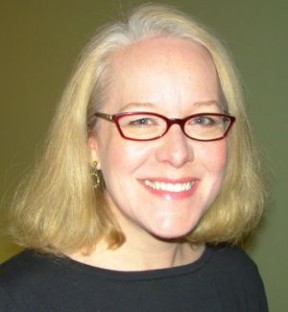 Alison Gates is the current chair of the Art Program at University of Wisconsin-Green Bay in Green Bay, WI. She holds a BA and BFA from Western Washington University and an MFA in Studio Art/Fibers from University of Washington.
Alison Gates is the current chair of the Art Program at University of Wisconsin-Green Bay in Green Bay, WI. She holds a BA and BFA from Western Washington University and an MFA in Studio Art/Fibers from University of Washington.
Her work has appeared in exhibitions in Seattle Art Museum, Museum of Wisconsin Art, John Michael Kohler Arts Center and other spaces. She is co-curator of the Exquisite Uterus: The Art of Resistance and has written for Surface Design Journal and FiberArts magazines.
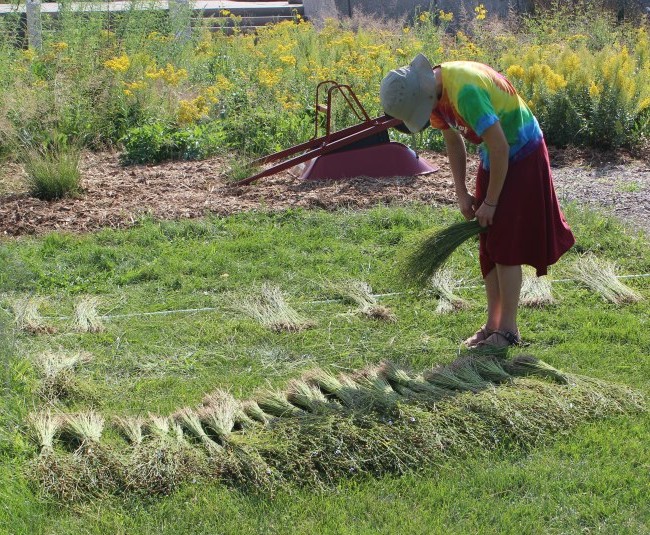
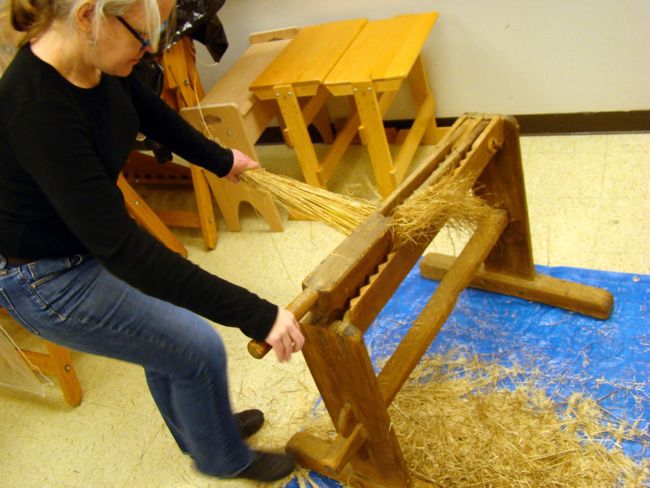
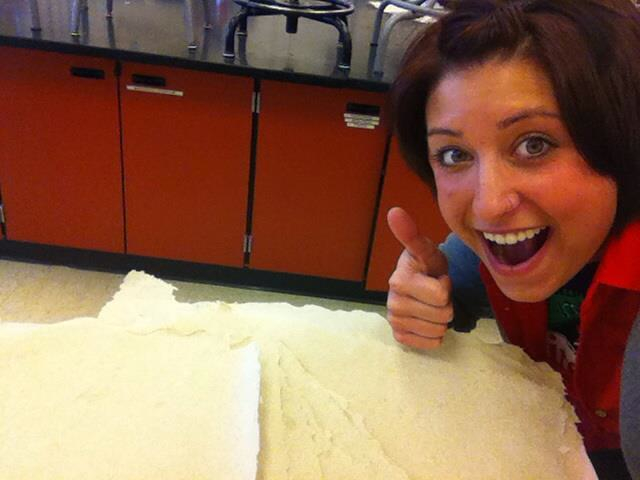
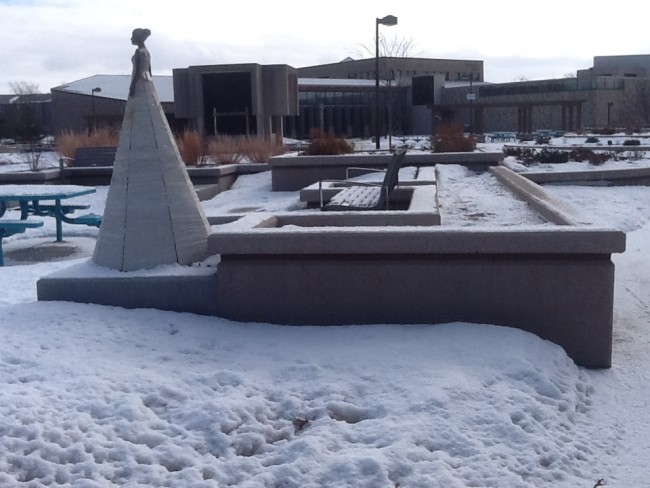
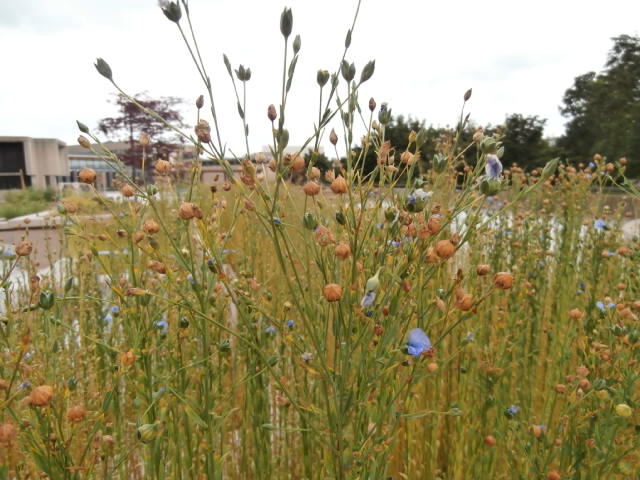

2 Comments
Lori Ellen Bialic says
April 14, 2015 at 12:11 am
Thank you so much for this in its entirety. And for paving the way for me.
Kirsten N says
April 23, 2018 at 10:52 am
Cool! This is a nice project. Growing your own flax looks interesting.
Related Blog Articles
DIY Craft
“Standing Tall: A Heart-FELT Reflection” by Martien van Zuilen
DIY Craft
Friday Fibers Roundup: Materiality
DIY Craft
Friday Fibers Roundup: Fashion Traditions